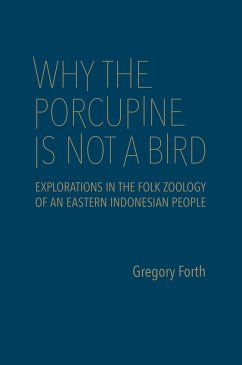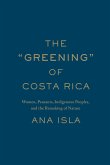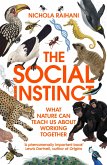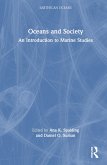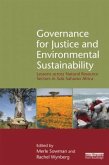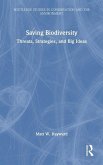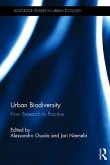Gregory Forth
Why the Porcupine Is Not a Bird
Explorations in the Folk Zoology of an Eastern Indonesian People
Gregory Forth
Why the Porcupine Is Not a Bird
Explorations in the Folk Zoology of an Eastern Indonesian People
- Gebundenes Buch
- Merkliste
- Auf die Merkliste
- Bewerten Bewerten
- Teilen
- Produkt teilen
- Produkterinnerung
- Produkterinnerung
Why the Porcupine Is Not a Bird is a comprehensive analysis of knowledge of animals among the Nage people of central Flores in Indonesia.
Andere Kunden interessierten sich auch für
![The Greening of Costa Rica The Greening of Costa Rica]() Ana IslaThe Greening of Costa Rica80,99 €
Ana IslaThe Greening of Costa Rica80,99 €![The Social Instinct The Social Instinct]() Nichola RaihaniThe Social Instinct8,49 €
Nichola RaihaniThe Social Instinct8,49 €![Oceans and Society Oceans and Society]() Oceans and Society165,99 €
Oceans and Society165,99 €![Urban Water Ecosystems in Africa and Asia Urban Water Ecosystems in Africa and Asia]() Urban Water Ecosystems in Africa and Asia180,99 €
Urban Water Ecosystems in Africa and Asia180,99 €![Governance for Justice and Environmental Sustainability Governance for Justice and Environmental Sustainability]() Governance for Justice and Environmental Sustainability196,99 €
Governance for Justice and Environmental Sustainability196,99 €![Saving Biodiversity Saving Biodiversity]() Matt W HaywardSaving Biodiversity190,99 €
Matt W HaywardSaving Biodiversity190,99 €![Urban Biodiversity Urban Biodiversity]() Urban Biodiversity180,99 €
Urban Biodiversity180,99 €-
-
-
Why the Porcupine Is Not a Bird is a comprehensive analysis of knowledge of animals among the Nage people of central Flores in Indonesia.
Hinweis: Dieser Artikel kann nur an eine deutsche Lieferadresse ausgeliefert werden.
Hinweis: Dieser Artikel kann nur an eine deutsche Lieferadresse ausgeliefert werden.
Produktdetails
- Produktdetails
- Verlag: University of Toronto Press
- Seitenzahl: 400
- Erscheinungstermin: 26. Februar 2016
- Englisch
- Abmessung: 231mm x 160mm x 30mm
- Gewicht: 703g
- ISBN-13: 9781487500047
- ISBN-10: 1487500041
- Artikelnr.: 43896924
- Herstellerkennzeichnung
- Libri GmbH
- Europaallee 1
- 36244 Bad Hersfeld
- gpsr@libri.de
- Verlag: University of Toronto Press
- Seitenzahl: 400
- Erscheinungstermin: 26. Februar 2016
- Englisch
- Abmessung: 231mm x 160mm x 30mm
- Gewicht: 703g
- ISBN-13: 9781487500047
- ISBN-10: 1487500041
- Artikelnr.: 43896924
- Herstellerkennzeichnung
- Libri GmbH
- Europaallee 1
- 36244 Bad Hersfeld
- gpsr@libri.de
Gregory Forth is a professor in the Department of Anthropology at the University of Alberta and a fellow of the Royal Society of Canada.
Preface
Note on Orthography
Chapter 1. Introduction
Chapter 2. Investigating Folk Knowledge: A Methodological Prospectus
Chapter 3. Animals, Humans, and Other Mammals
Part 1: Mammals
Chapter 4. Animals of the Village: Domestic and Partly Domestic Mammals
Chapter 5. The Giant Rat of Flores and Other Never Domesticated Mammals
Chapter 6. Symbolic and Utilitarian Dimensions of Mammal Categories:
Varieties of Special Purpose Classification
Part 2: Non-mammals
Chapter 7. Birds, or “Creatures that Fly High in the Sky”
Chapter 8. Snakes: The Life-form Nipa
Chapter 9. Neither Fish nor Fowl: A Non-mammalian Miscellany
Chapter 10. Things with Tails but without Backbones: Invertebrates in Nage
Folk Zoology
Part 3: Comparisons and Curiosities
Chapter 11. What’s in an Animal Name: Comparative Observations on Animal
Nomenclature, Classification, and Symbolism
Chapter 12. When Birds Turn Into Mammals and Mammals into Fish: Nage
“Beliefs” about Animal Transformation
Chapter 13. Animal Mysteries and Disappearing Animals
Chapter 14. Concluding Remarks
Appendix 1. Terms for Human and Animal Body Parts
Appendix 2. Growth Stages in Several Wild Animals
Appendix 3. Nage Invertebrate Categories
Appendix 4. Animal Names Used as Personal Names in Central Nage
Note on Orthography
Chapter 1. Introduction
Chapter 2. Investigating Folk Knowledge: A Methodological Prospectus
Chapter 3. Animals, Humans, and Other Mammals
Part 1: Mammals
Chapter 4. Animals of the Village: Domestic and Partly Domestic Mammals
Chapter 5. The Giant Rat of Flores and Other Never Domesticated Mammals
Chapter 6. Symbolic and Utilitarian Dimensions of Mammal Categories:
Varieties of Special Purpose Classification
Part 2: Non-mammals
Chapter 7. Birds, or “Creatures that Fly High in the Sky”
Chapter 8. Snakes: The Life-form Nipa
Chapter 9. Neither Fish nor Fowl: A Non-mammalian Miscellany
Chapter 10. Things with Tails but without Backbones: Invertebrates in Nage
Folk Zoology
Part 3: Comparisons and Curiosities
Chapter 11. What’s in an Animal Name: Comparative Observations on Animal
Nomenclature, Classification, and Symbolism
Chapter 12. When Birds Turn Into Mammals and Mammals into Fish: Nage
“Beliefs” about Animal Transformation
Chapter 13. Animal Mysteries and Disappearing Animals
Chapter 14. Concluding Remarks
Appendix 1. Terms for Human and Animal Body Parts
Appendix 2. Growth Stages in Several Wild Animals
Appendix 3. Nage Invertebrate Categories
Appendix 4. Animal Names Used as Personal Names in Central Nage
Preface
Note on Orthography
Chapter 1. Introduction
Chapter 2. Investigating Folk Knowledge: A Methodological Prospectus
Chapter 3. Animals, Humans, and Other Mammals
Part 1: Mammals
Chapter 4. Animals of the Village: Domestic and Partly Domestic Mammals
Chapter 5. The Giant Rat of Flores and Other Never Domesticated Mammals
Chapter 6. Symbolic and Utilitarian Dimensions of Mammal Categories:
Varieties of Special Purpose Classification
Part 2: Non-mammals
Chapter 7. Birds, or “Creatures that Fly High in the Sky”
Chapter 8. Snakes: The Life-form Nipa
Chapter 9. Neither Fish nor Fowl: A Non-mammalian Miscellany
Chapter 10. Things with Tails but without Backbones: Invertebrates in Nage
Folk Zoology
Part 3: Comparisons and Curiosities
Chapter 11. What’s in an Animal Name: Comparative Observations on Animal
Nomenclature, Classification, and Symbolism
Chapter 12. When Birds Turn Into Mammals and Mammals into Fish: Nage
“Beliefs” about Animal Transformation
Chapter 13. Animal Mysteries and Disappearing Animals
Chapter 14. Concluding Remarks
Appendix 1. Terms for Human and Animal Body Parts
Appendix 2. Growth Stages in Several Wild Animals
Appendix 3. Nage Invertebrate Categories
Appendix 4. Animal Names Used as Personal Names in Central Nage
Note on Orthography
Chapter 1. Introduction
Chapter 2. Investigating Folk Knowledge: A Methodological Prospectus
Chapter 3. Animals, Humans, and Other Mammals
Part 1: Mammals
Chapter 4. Animals of the Village: Domestic and Partly Domestic Mammals
Chapter 5. The Giant Rat of Flores and Other Never Domesticated Mammals
Chapter 6. Symbolic and Utilitarian Dimensions of Mammal Categories:
Varieties of Special Purpose Classification
Part 2: Non-mammals
Chapter 7. Birds, or “Creatures that Fly High in the Sky”
Chapter 8. Snakes: The Life-form Nipa
Chapter 9. Neither Fish nor Fowl: A Non-mammalian Miscellany
Chapter 10. Things with Tails but without Backbones: Invertebrates in Nage
Folk Zoology
Part 3: Comparisons and Curiosities
Chapter 11. What’s in an Animal Name: Comparative Observations on Animal
Nomenclature, Classification, and Symbolism
Chapter 12. When Birds Turn Into Mammals and Mammals into Fish: Nage
“Beliefs” about Animal Transformation
Chapter 13. Animal Mysteries and Disappearing Animals
Chapter 14. Concluding Remarks
Appendix 1. Terms for Human and Animal Body Parts
Appendix 2. Growth Stages in Several Wild Animals
Appendix 3. Nage Invertebrate Categories
Appendix 4. Animal Names Used as Personal Names in Central Nage

